Bulgarian cuisine , its food and typical dishes, represent an experience in the flavors, traditions and culture of the country, knowing what to eat in Bulgaria during your trip. Traditional Bulgarian recipes include simple dishes, influenced by the raw materials present in the varied territory and by the cultural influences that have arrived here over the centuries. Among the main ingredients we find vegetables and spices , as well as elements present in Balkan cuisine . Salads, hot and cold soups, fruit and grilled meat are never lacking, as are dairy products. So let’s discover the best typical Bulgarian dishes and foods, thus making your trip to Bulgaria complete and unique!
Bulgarian Cuisine
If you are wondering what Bulgarians eat, you are in the right place. The history of Bulgaria and the cultural influences that came here created today’s Bulgarian cuisine, joining the tradition of Thracian, Slavic and proto-Bulgarian cuisine during the Bulgarian State. The history of Bulgarian cuisine, its typical foods and dishes are influenced by several factors, including climate and landscape variety . The numerous ethnic groups present in the area, with their own traditions, have contributed to the development of typical Bulgarian dishes. Historians indicate that the ingredients of the ancient local cuisine included mainly vegetables , pork , poultry and sheep, as well as dairy products and cereals .
From the 17th century, ingredients from the New World were introduced , such as peppers and tomatoes, while rice and spices arrived from the East . In the 19th century , with the liberation of Bulgaria, European influences arrived , integrating cooking methods and ingredients. After 1965 , many basic ingredients disappeared from the market and were replaced , such as butter by lard and olives by cucumbers. Instead of fish roe, comes jellied corned meat: Rousse’s boiled meat . With the communist regime , now iconic brands also appear in the national cuisine, such as the ovcharska salad, moving away from traditional cuisine and creating today’s Bulgarian foods that we can find among the things to eat during our trip to Bulgaria.
Click the button and find all search platforms and book your next trip yourself.
Read also: What to buy in Bulgaria? – Souvenir Bulgaria ’24
What to Eat in Bulgaria and Where, Typical Bulgarian Dishes
1. Insalata Shopska
Traditionally, Bulgarian cuisine and its foods are characterized by salads with seasonal vegetables, fresh or canned. We find cucumbers, peppers, onions, turnips, tomatoes and potatoes, as well as many spices , including dill and parsley. Shopska is among the most iconic salads among typical Bulgarian dishes, often served with pickles, turshiya , especially in winter, as well as various sauces, such as ljutenica , which we will see later. In the Balkan area, and not only in Bulgaria, salads are not only appetizers, but also side dishes to the main course, which can be hot or cold, accompanying meat or grilled dishes .
Shopska has appeared since the 1950s , taking its name from the region between Sofia and North Macedonia . Inside we find onions, green peppers, tomatoes, cucumbers and the typical Sirene cheese. The vegetables are served cut into small cubes and seasoned with seed oil, vinegar and salt. At the restaurant, the condiments are served separately. The vegetables, on the other hand, are covered with a generous layer of grated or diced cheese, sirene . Traditionally this salad is accompanied by a glass of rakia .
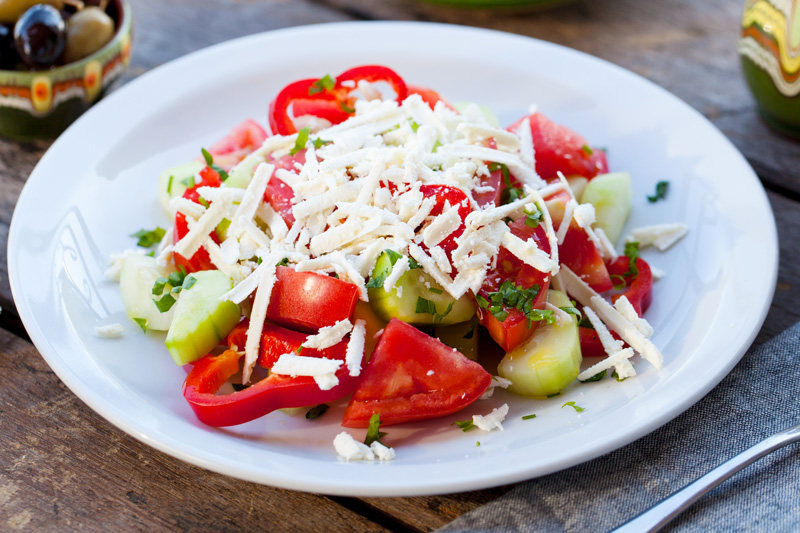
2. Tarator
Among the most popular dishes of traditional Bulgarian cuisine and things to eat absolutely during your trip to Bulgaria, we find cold and hot soups . The most loved is undoubtedly the tarator, a cold soup based on yogurt with chopped cucumber , oil, salt, walnuts, garlic and dill. Typical Bulgarian dish widespread especially in summer, it is also widespread in Macedonia and Albania, Turkey, Cyprus with the name of ttalattouri and Armenia. Yogurt is very widespread in Bulgaria, present in many recipes and in supermarkets there are many brands and types of yogurt.
Furthermore, the Bulgarian yogurt present in this soup and the one produced in the country is the only one to use the microorganism Lactobacillus bulgaricus in the production process . Furthermore, this soup, depending on the thickness with which it is prepared, is also often used as an accompanying sauce . The yogurt is in fact diluted with water, adding more or less in proportion based on the result you want to obtain.
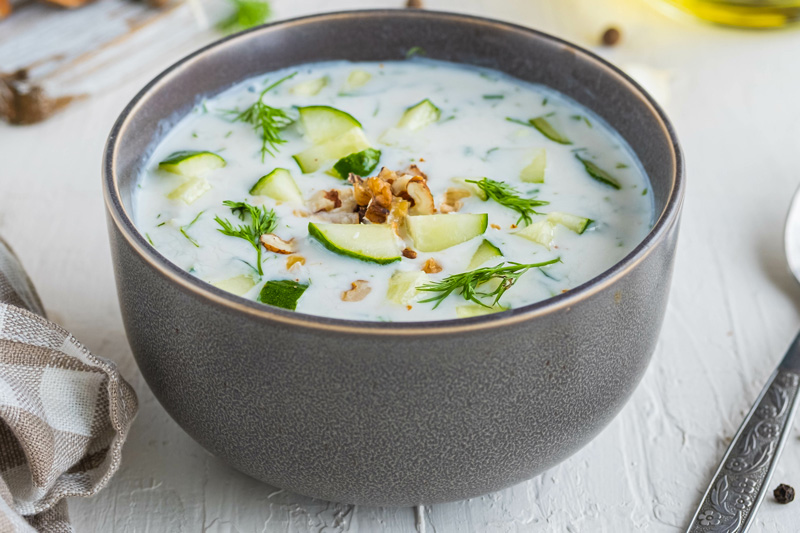
3. Tatarsko
A simple recipe, but much loved in local cuisine, we find Tatarsko, flattened grilled meatballs made with spiced meat. In terms of preparation and taste, it is a typical Bulgarian dish very similar to Kebapche , grilled sausages, which together make up the traditional mixed grill , called meshana skara . Furthermore, there is also a variant of these stuffed meatballs with melted cheese , called Tatarsko Kyufte.
Also called kyufte , these meatballs are absolutely among the things we recommend eating in Bulgaria, appreciated above all for their softness and flavor. The recipe calls for minced pork and rarely beef, flavored with garlic, black pepper and cumin. The meatballs formed with this mix are cooked in the oven or on the grill . Accompany with a side salad or yogurt-based sauce. Furthermore, the term Kofta refers to all dishes based on meatloaf or meatballs in the cuisine of the Balkans, but also of Central Asia, the Middle East and the Caucasus.

4. Sirens
Also called bjalo salamureno sirene , sirene cheese is a white cheese, typical of Bulgarian cuisine and among the most loved typical dishes. Present in many recipes, this cheese is prepared following the traditional recipe with sheep’s milk . Originally, it was prepared in the 19th century only for personal use by those who prepared cheese or milk, and was then sold on an industrial scale also with cow’s milk following the increase in demand. Similar to Greek feta or Turkish beyaz peynir , it is among the most famous pecorino cheeses in the world.
A hard-friable pasta , it has no crust or large holes and its consistency must be neither hard nor too soft. For its preparation it is placed in parallelepipeds of various sizes, in a white brine, with an odor and flavor that tends towards acid. In fact, sirene has a sour and salty flavour . Furthermore, its mass must contain at least 50% fat and a maximum of 6% salt. The first companies producing this cheese were born in Bulgaria in the 20th century , reaching the largest percentage of this cheese produced in the country in 1974.
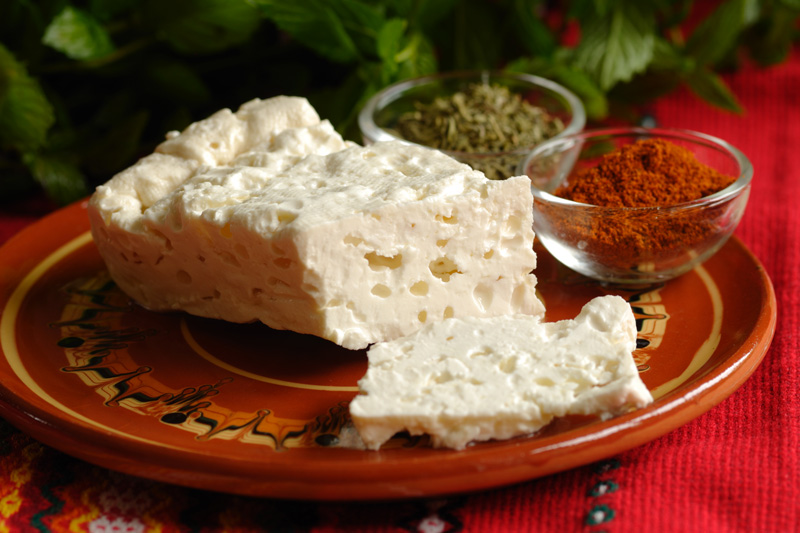
5. Kavaram
Typical Bulgarian food absolutely worth eating during your trip if you love meat, present in the menus of all traditional restaurants, is Kavarma. A pork stew , most of the time, which can have many variations from one region to another. In fact, it can be prepared with chicken, lamb, mushrooms, eggs, peppers, leeks, onion and many other ingredients. Furthermore, for its cooking, a typical terracotta pot, the Gyuveche , is used for slow preparation .
If you don’t have this pan, however, a normal steel pan or a slow cooker will also work. Thanks to the ingredients present inside, this slow cooked stew has very soft meat and the mix of vegetables give it unique flavours. The version with peppers and tomatoes is considered summery. Instead, in winter, the peppers are replaced with mushrooms and the tomatoes with tomato puree . Furthermore, based on preferences, it is also prepared with chicken or lamb .
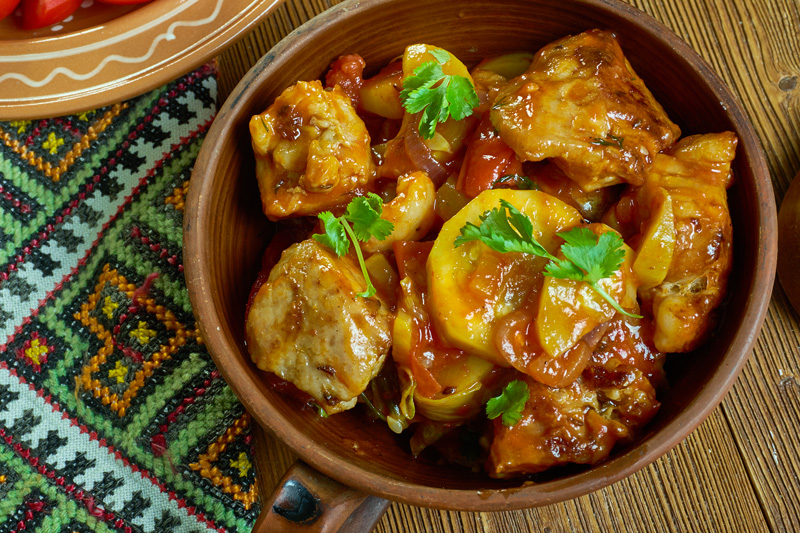
6. Banitsa
What to eat in Bulgaria that is delicious and that satisfies the tastes of sweet and savory lovers? But of course the banitsa! Typical Bulgarian dish also widespread in the Balkans, known by different names depending on the area in which we find it, such as milina if prepared in Ukraine by Bulgarian emigrants. Prepared with beaten eggs, mermaids, filo pastry and then baked in the oven . Traditionally its filling is composed of white cheese, eggs and feta, as well as sometimes yogurt and sodium bicarbonate to allow correct leavening and make the dough softer. Furthermore, there is also a variety of this Bulgarian food with a filling of chard, sorrel, spinach, nettle, leeks, sauerkraut or cabbage, taking the name zelnik , i.e. green .
With the leek it is called praznik and with the onion luchnik . Furthermore, in some regions we can find this Bulgarian food with a filling of rice , minced meat, onions and mushrooms. Finally, for those with a sweet tooth, there is a version of sweet banitsa, similar to strudel , with a filling of apples, or pumpkin, cinnamon and walnuts. With apples it is called shtrudel , while with pumpkin it is called tikvenik . Today, Bulgarians prepare this recipe in their homes by directly dipping the filo pastry in eggs, vanilla and sugar for a tasty and quick dessert also served on special occasions. Furthermore, during the New Year , lucky charms , such as coins, symbols or greeting cards, are placed inside the banitsa.
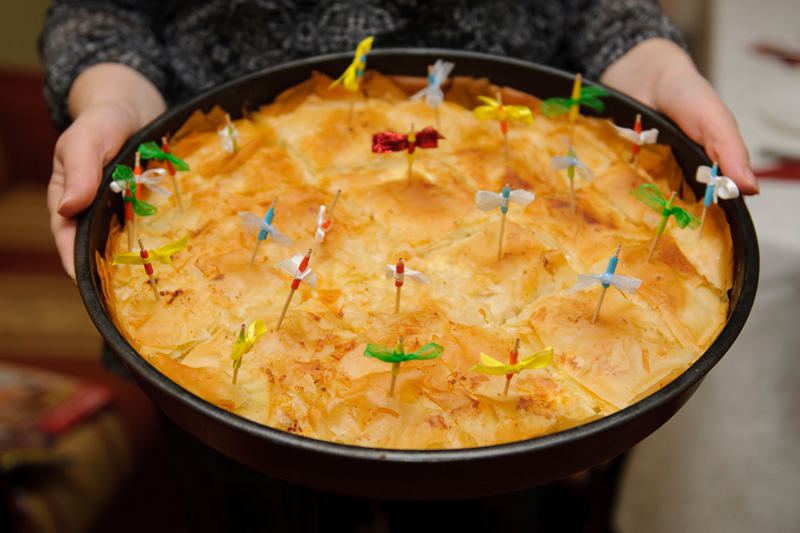
7. Shkembe
For fifth quarter lovers , among the traditional Bulgarian foods to eat during a trip to Bulgaria, shkembe chorba cannot be missing. Among the typical Bulgarian winter dishes , it is a tripe soup traditionally accompanied by fresh bread and is considered an excellent remedy for hangovers . Its preparation takes place by boiling the tripe cut into small pieces for a long time. Salt, milk and paprika are added, cooked for a long time and then served in individual bowls. A very popular dish also in Turkey, where it takes the name of işkembe çorbası , i.e. tripe soup.
In Bulgarian cuisine, this dish is prepared with lamb, beef or pork tripe boiled for many hours in water and then in broth, seasoned with sweet paprika and then fried with butter and milk . At the table, the soup is served with a sauce of vinegar, garlic and red chili pepper. Furthermore, a variant of the dish is prepared with intestines and was a very popular dish in the working class until the 1980s . In fact, there were many trattorias that served only this dish, which has now become common and widespread throughout the country.
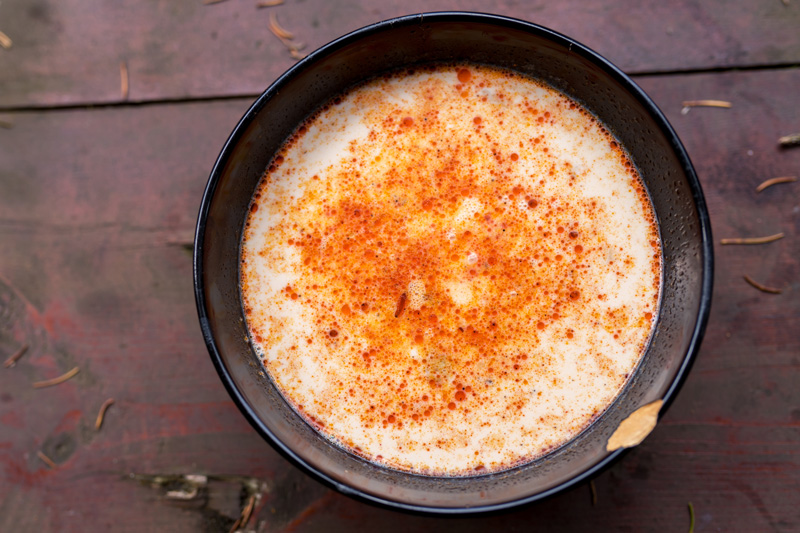
8. Kebapche
Another tasty meat-based dish from Bulgarian cuisine that cannot be missed during a trip to Bulgaria are kebapche. Featuring spiced, minced meat , kebapche has origins from the Turkish kebab . As per tradition, the meat used is a mix of beef and minced pork, but there is also a variant with only pork. After being minced and seasoned, the meat is shaped into a cylinder shape .
Furthermore, salt, pepper and cumin are also placed on top to further flavor it and the meat is then cooked on the grill . They are then served with fried potatoes, sirens or ljutenic sauce. Very similar to the Balkan cevapcici , these Bulgarians however are usually longer. Considered the Bulgarian hot dog , it is an excellent light and summer meal, often also served with a tasty side salad. If this minced meat mix is instead shaped into a ball shape, a kyufte is cooked instead .
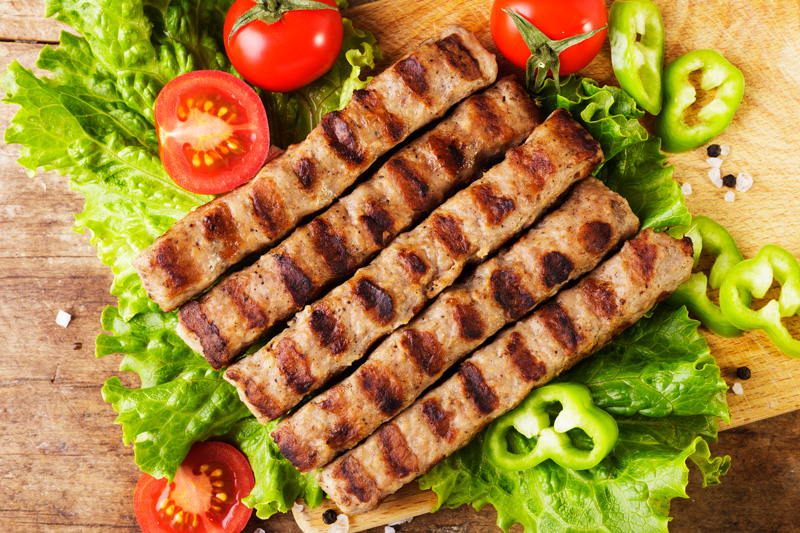
9. Lutenica
Among the typical flavors of Bulgarian cuisine and which will certainly not be missing in many typical dishes that you will eat during your trip to Bulgaria, ljutenica cannot be missing. Vegetable-based condiment also popular in Serbian and Macedonian cuisine, the root of its name, luto , means spicy, but it is not always with chili pepper. Inside we can find carrots, aubergines, peppers, onion, garlic, pepper, sugar, tomatoes and salt and there are numerous variations . Its consistency can also be chunky or blended, depending on your preference. Bulgarians love to spread it on bread and in supermarkets we will find entire shelves of numerous types and brands of ljutenica.
It is also served instead of sauces to accompany chips, meat and to fill sandwiches. Furthermore, it is very economical , costing around 1 euro per jar, and is loved for its taste. It will be really difficult to find the same recipe for this dish repeated twice in Bulgaria in the same way, as it is a recipe of traditional Bulgarian cuisine and each family or place has developed its own. The most popular version of this typical Bulgarian food is the one lightly blended, still leaving small pieces of vegetables.
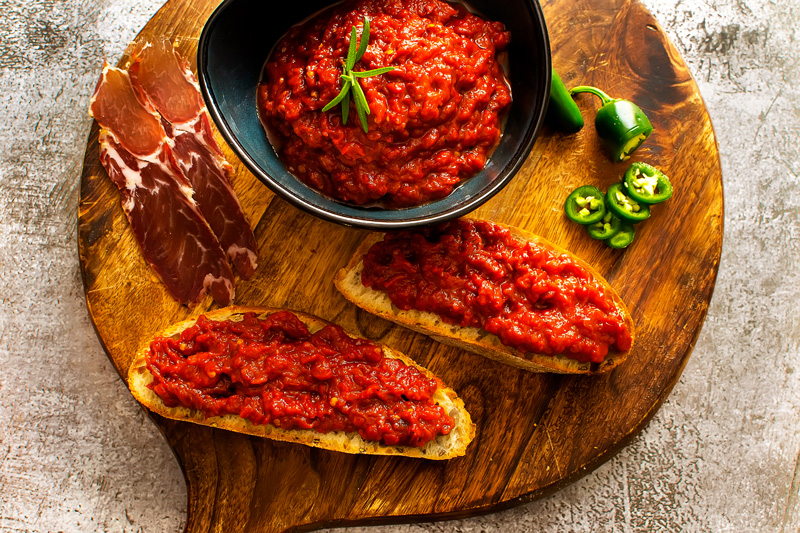
10. Pecheni yabalki
Finally, let’s end our journey through Bulgarian cuisine on a sweet note . To make everyone happy who is wondering what dessert to eat during a trip to Bulgaria, we find the tasty pecheni yabalki. Bulgarian desserts differ greatly from Mediterranean ones, being more linked to traditional home cooking . Among the most loved are pecheni yabalki, roasted apples stuffed in many ways, suitable for any time of year.
Furthermore, apples are a very present ingredient in desserts and Bulgarian foods. To prepare it, the apple is baked for about 1 hour, covering it with a glaze made from raw sugar, butter and cinnamon. But first it is prepared by removing the core, hollowing out the center and filling it with icing, nuts and according to taste. A simple traditional flavor and a delicious smell reminiscent of childhood!
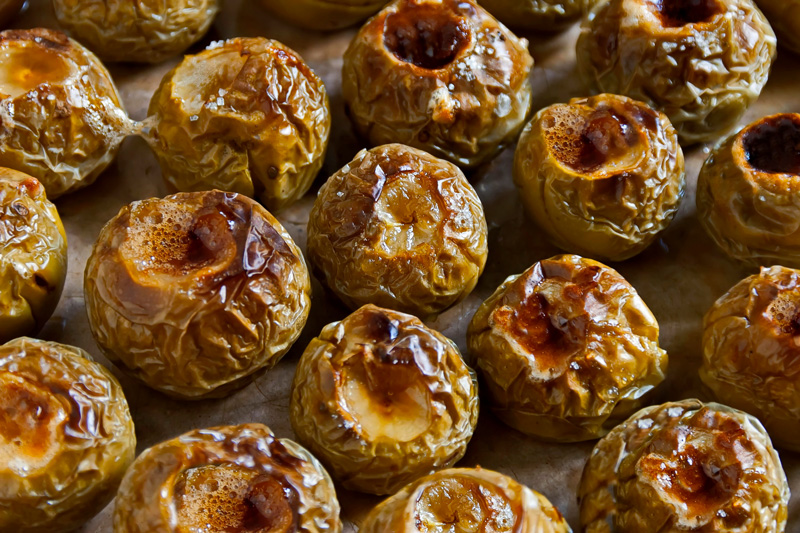
Visit Bulgaria along the Ways of Taste
Our advice on the cuisine and typical dishes of Bulgaria is over, with the Bulgarian foods you absolutely must try during your trip. One thing that cannot be missing among the things to eat in Bulgaria are its delicious desserts, such as pechena tikva . A roasted pumpkin with almonds, or banitza , filled with apples or pumpkin. Finally, to accompany tea or coffee we find lokumki biscuits . For a snack, try the tasty savory butter biscuits with cheese . Finally, at the end of the meal you cannot miss a glass of the typical rakia , the national distillate. Among the typical traditional drinks we also find Tarator and Airian , both based on yogurt .
Read also: What to see in Bulgaria – Guide to Bulgaria




